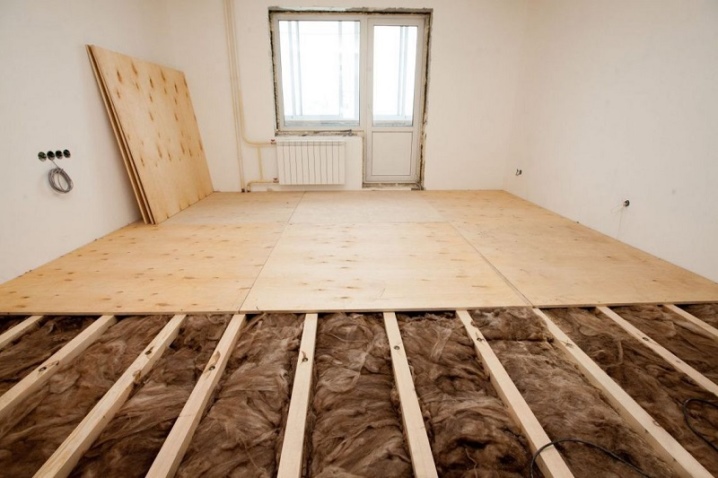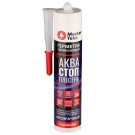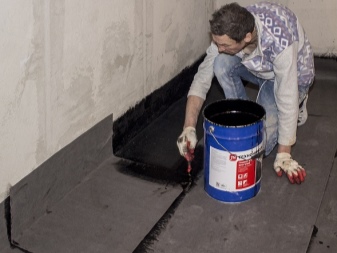Laying plywood on logs

Before laying the floor covering in the form of linoleum, laminate or carpet, the surface of the floor is prepared in such a way that it is even and durable. For the flooring, a prefabricated dry screed is used, which is performed using wooden logs and plywood. This design is capable of withstanding heavy loads and can be applied to any type of floor. To make a floor from plywood sheets, it is necessary to choose the right material and install it. The erection of the floor surface requires certain knowledge and skills from the master.

Peculiarities
Plywood flooring is used for rough and final preparation of the floor both in a wooden house and in an apartment. Such a device allows you to prepare the floor for laminate or linoleum. The essence of the design is that plywood is laid on logs made of wooden beams.
Plywood is woodworking product, which consists of several layers of thin veneer glued together in a cross direction. Rotary cut veneer for plywood sheets are obtained by processing birch, pine or industrial varieties of other wood species.
Like any material, sheet plywood has virtues and some disadvantages, which the master preparing the floor needs to know.
Material pluses:
- resistance to high weight and mechanical loads;
- resistance to moisture and chemical components;
- bending strength;
- the ability to choose the required size format;
- low moisture content of wood and low weight of the sheet;
- the possibility of using for the organization of the system "warm floor".


TO cons material can be attributed to the fact that some brands in the glue contain formaldehyde, which is harmful to human health.
Making a screed for flooring with plywood and wooden logs is complex construction and installation procedure, which must be performed in accordance with the norms of SNiP.
When designing this complex of works, it is important to take into account not only the properties of the material used, but also the methods of its installation.


What kind of plywood can I use?
In order to carry out a dry floor screed, it is necessary as the main material to lay construction or construction type plywood. The grade of plywood should be chosen depending on the conditions in which the material is to be found.
There are 3 main types of plywood.
- FSF - this is birch plywood, which consists of veneer and has resin and formaldehyde components in its adhesive composition. The material has high performance, it is resistant to moisture. It can be used for both indoor and outdoor types of work.
- FC - the veneer sheets in this plywood are bonded with glue, which includes formaldehyde. The material is resistant to a humid environment, but it can only be used for interior work.
- FBA - the adhesive composition of this plywood does not contain formaldehyde components and consists of casein, which is harmless to humans. Such material has a reduced resistance to moisture and can only be used indoors in dry rooms.
By the quality of the workmanship of plywood subdivided into 5 varieties. Grade E is elite, while materials of low quality are of grade IV.
For the subfloor, it is advisable to use grade II-IV plywood, and for finishing, it is worth choosing grade E or grade I of the material.



Important for the choice of material is also played by its the size... If you plan to make flooring from small fragments of plywood, then use a material of 1525x1525 mm. It is convenient to work with it, but on large surfaces you will have to make many joints. The dimensions of 1210x2440 mm are more convenient. A sheet with such parameters is used in typical city apartments, for flooring in rectangular rooms.
Having decided on the dimensions of the sheet, you need to choose the right material thickness... In this case, you will need to take into account all the nuances of the screed device.
The calculation of the plywood thickness for the flooring is selected depending on the step with which the logs are laid:
- if the distance between the lags is from 35 to 40 mm, then the thickness of the plywood sheet should be at least 9-10 mm;
- if the crate has cells with a side of 50 cm, then the flooring is made of plywood with a thickness of 10-12 mm;
- if the step between the lathing segments is 60 cm, then the flooring is made of 12-14 mm plywood.
When choosing the thickness of plywood, it is necessary lay an extra margin of safety by thickness on the weight load to which the floor surface will be subjected. For the location of massive furniture, it is best to take plywood, the thickness of which is 16-18 mm.
In some cases, it is allowed to take plywood with a thickness of 9 mm and lay it in 2 layers to evenly distribute the load force on the floor surface.


When the dimensions and thickness of the sheet are determined, you need to calculate how many sheets you need to buy to complete the floor screed. You can calculate the material consumption as follows:
- having clearly measured the dimensions of the room, they draw a diagram of the location of the lag on paper, determining their number and step;
- the diagram indicates how the plywood sheets will be located, taking into account the format of the material;
- according to the final data, the required amount of material is calculated.
In cases where the shape of the room has a complex configuration, the object is divided into parts and each of them is counted separately. If the room has the correct proportions in the form of a square or rectangle, then calculate the floor area and count the number of sheets required to cover it, taking into account the area of the plywood sheet.



Tools and materials
To complete the installation of the flooring, you will need to prepare the following tools:
- liquid or laser building level;
- tape measure and pencil for taking measurements and marking;
- electric drill or hammer drill;
- drill for concrete, drill for wood;
- screwdriver with bits for self-tapping screws;
- self-tapping screws for chipboard and concrete anchors;
- screws and metal jumper brackets for logs;
- an electric saw or a hand-held miter saw;
- grinder;
- sealant;
- sandpaper.






You will need to purchase wooden blocksfrom which the lags will be executed. With the help of a lag, the floor surface is leveled, creating a base frame for plywood flooring. For making lags choose a dry wooden beam 2 m long. The width of the timber can be from 80 to 100 mm, and the thickness is taken at least 40 mm.
To carry out fastenings, acquire hardware - galvanized self-tapping screws with screw thread.
The length of the self-tapping screw is taken 2.5 times more than the thickness of the plywood sheet, and the diameter is suitable from 3.5 mm to 5 mm.


Laying technology
Before you start laying the flooring battens, you must prepare concrete floor for further work. The correct sequence of work is to first clean the floor of debris, and then inspect the surface for minor defects - chips, cracks, dents. All these shortcomings must be eliminated even before the crate is completed.
In some cases, depending on the purpose of the room, before the frame structure is made and it will be possible to cover the floor with plywood, perform gwaterproofing of a concrete surface. These works can be done by hand. Isolate you need not only the floor surface, but also a part of the wall, up to the level of the finished floor.
This insulated distance will keep you from leaking water into the rooms below.


Preparation
Having prepared the surface for laying the logs, do not forget about the possible unevenness of the walls. An uneven wall will prevent you from laying a flat plywood sheet. There are two ways out of the situation: either level the walls before starting the floor repair, or trim the plywood sheets based on the curvature of the wall.
Pruning is done as follows:
- a sheet of plywood is moved in a lying position to the wall so that its opposite edge is placed strictly parallel to the log on the floor;
- a single rail is placed parallel to the wall on top of the sheet;
- draw a line along which the plywood sheet is trimmed.
Before starting work on flooring, you must prepare material... It is cut into the elements necessary in length and width in accordance with the previously drawn up schematic work plan.
When cutting, remember that the edges of the plywood sheet should not reach the wall by about 10 mm.

Frame formation
The next stage of work, when the wooden blocks are cut to size, the lathing itself is performed... The structure of the lathing should not be made close to the wall, there should be a distance of 10-15 mm between them.
Lag installation sequence:
- a point is selected that protrudes above the floor level most of all, all other logs will be aligned along it;
- to speed up the installation process, you need to pull the cord on the sides of the room, adjusting its position using a building level;
- under each log, a substrate is laid from a piece of thin plywood, it increases the contact area of the support;
- the logs are fastened to the concrete base with anchor hardware;
- the step of placing the wooden blocks must correspond to your schematic plan, a range from 35 to 60 cm is allowed;
- the timber is fastened to each other with screws and metal bridges.
When performing the structure of the lathing according to the drawing, you should get a flat horizontal structure. Lags are placed with a uniform step and indentation from the walls. The gap between the wall and the crate is made so that, under the influence of moisture, the expanded wood does not lift the plywood flooring and does not cause deformation of the laminate or other floor covering.


Floor insulation
For floor insulation use mineral wool or foam, which is laid in the cells formed by the intersection of the lag in the crate. Before installation, mineral materials must be allowed 24 hours to adapt to the conditions of your room, so that after installation there are no holes and voids. Sheets of polystyrene or insulation are trimmed so that they fit tightly into the lathing cell. The upper part of the insulation should not reach the edge of the log by 1 cm.
Polyfoam and expanded polystyrene are used for concrete bases, while mineral or basalt wool is used in wooden houses.



Fastening sheets
Prepared and cut plywood sheets are laid on the crate as follows:
- the start of laying is carried out from the far corner of the room and moves along the direction of the solid wall;
- the distance from the wall to the plywood sheet should remain 10 mm;
- attachment points are marked on plywood sheets, retreating from the edge of the sheet by 2 cm;
- the interval between self-tapping screws is 20-30 cm;
- the caps of the screws must be completely drowned in the plywood material, for this, before installing them, a hole is made in the sheet with a wood drill with a countersink.
- after installing 1 row, the surface is cleaned of shavings and 2 rows are laid out;
- when fixing a plywood sheet, you need to start work from the center to the periphery - this makes it possible to fit the sheet more evenly on the sheathing structure;
- when laying plywood in 2 layers, the seams of the joints are broken in a checkerboard pattern.
After the flooring is completed, it is necessary grind the surface of the floor with a grinder. For this purpose, choose a nozzle with abrasive 120 units. After sanding is completed, the floor is cleaned of shavings and dust, and then docking seams and holes from self-tapping screws are filled with sealant. A wood putty can be used instead of a sealant. When the material hardens, the seams are sanded with sandpaper. After completing these works, you can start laying linoleum, tiles or laminate.


Recommendations
In some cases, when it is necessary to save on materials, the final floor is laid immediately on the crate, without making a subfloor. The height of the log in this case depends on the level to which you need to raise the floor in the room. If the distance is small, then the structure in the form of a crate is replaced with an ordinary board with a thickness of 30 mm.
To perform work choose wood for lathing and plywood sheets of good chamber drying... Ideally, the material should be allowed to rest in the room where it will be used for at least a week.
The fulfillment of this condition will be able to give you a guarantee that the finished floor will subsequently not squeak under your feet.

You can watch a video on how to put plywood on logs below.













The comment was sent successfully.